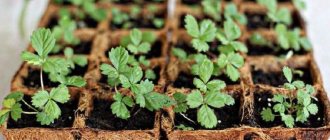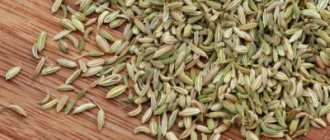In spring, fast-growing flowers are sown. These can be either annuals or perennials. The first ones bloom within 2-3 months. and bloom all season. Perennials are placed immediately in a permanent place. You can understand which flowers are planted in the spring based on the individual characteristics of each species: whimsicality, optimal conditions necessary for their development, flowering time. With the right selection of plants, you can admire continuous flowering from early spring to late autumn.
Seedling method
Of all the options listed, seedlings are the most expensive and time-consuming, but the results are worth it. The advantages of this method are that plants bloom earlier and last longer. There are flowers that can only be grown by seedlings, in particular crops with small seeds: mesembryanthemum, purslane, petunia, mimulus, viola, etc.
Seeds are sown for seedlings from January to April, the specific period depends on the length of the growing season of a particular species. Sowing dates are usually written on bags of seeds.
To grow seedlings, use any universal soil mixture, either forest or garden soil, which is first disinfected from weeds and pests. All seedling containers are also disinfected before use.
Seeds are sown in shallow boxes and covered with film or glass. Germination occurs at a temperature of 20-24°C; they do not need lighting at this stage. From time to time, the crops are watered and ventilated.
When seedlings appear, the box is moved to a bright place; in some cases, additional lamp lighting may be needed. The temperature at this stage of development is 16-18°C.
When the first true leaves appear, the seedlings are planted (dive) into small containers (cups) for better development of the root system. It is planted in open ground when the threat of frost has passed, around mid-May.
How can a beginner decide on the varieties of seeds for seedlings?
The most reliable thing is to look at vegetable plantings from experienced neighbors in the country, ask them about the characteristics of the varieties, and also read the advice of experienced summer residents in your region. The image on the seed packaging is always beautiful, but you need to know how the crop will behave in the conditions of its native land. Don’t forget to write down the names of varieties after excursions to neighboring plots.
To be on the safe side, it is better to choose not one or two, but several proven varieties - with good germination, smooth ripening, and resistance to many diseases. Read seed packages carefully.
Select mid-ripening and early-ripening varieties of peppers, eggplants and tomatoes to treat yourself to your first fruits at the end of July, and maybe earlier. If you have greenhouses, garden passion and time, buy late-ripening varieties of tomatoes. Late-ripening peppers and eggplants in Siberia do not have time to ripen, so if there is no heated greenhouse, then there is no need to risk it.
For myself, I wrote out the following most praised varieties, but for the sake of experiment, I also bought 1-2 varieties of each crop simply according to the label I liked.
Peppers:
Red Knight (aka Red Knight), Belladonna (aka White Lady), Swallow, Atlas F1 (the prefix F1 means a hybrid, usually high-yielding, not requiring pre-sowing treatment, but subsequently the seeds from hybrid fruits are not used to obtain their own), Star of the East , Shanghai, Aristotle, California miracle (although the latter has low germination rate). These varieties are thick-walled.
Eggplant:
Epic F1, King of the North F1, King of the Market F1, Mirabella, Black Beauty.
Tomatoes for salads and general purpose:
Bull's Heart (similar to Ox Ears), Miracle of the Earth, Mazarin, Orange, Malachite Box, De Barao, Scarlet Candles, Golden King. These are all greenhouse varieties.
Tomatoes for pickling:
Intuition, Cascade, Nocturne, Kostroma, Icicle, Parsley the Gardener, Black Moor, Red Giant, Labrador, F1 Jury (aka Bipop), F1 Intrigue. Most are greenhouse.
Tomato for long-term storage:
Marfa - for open ground.
Tomatoes for open ground, early ripening:
Wonder of the World, Early 83, Golden Heart, Red Banana, Russian Apple Tree, Snowdrop, Little Red Riding Hood, Zolotnik, Brawler (Fighter).
Leek:
the most win-win variety is Tango.
Seedless method
Those who want to create a flower garden on their site with a minimum of effort and expense choose the seedless method. I threw the seed into the ground, watered it, it grew, and no problems with the seedlings.
However, only frost-resistant plants can be grown this way. And some crops do not tolerate transplants at all, so they are grown exclusively without seedlings. For example: cosmos, cornflowers, lupine, gypsophila, nasturtium, mignonette and others.
The exact timing of sowing in open ground primarily depends on the local climate and current weather.
The timing is also affected by the length of the growing season. For example, cold-resistant crops with a long growing season are sown early (approximately mid-April). And for heat-loving crops with a short growing season, late sowing is used (from about mid-May to early autumn).
Sow the seeds in soil prepared in advance. Grooves are made for small seeds, and nests are made for large ones. The depth of planting the seed should be equal to the sum of 2-3 of its diameters. And the distance between the seeds is at least 1 cm.
Then the crops are thinned several times. The first time - when the first true leaves appear, 5 cm are left between the seedlings. They are thinned out again 10 days after the first, but the distance is already greater - 10 cm between small plants, 30-40 cm between large ones.
Data for calculating the date of sowing seeds for seedlings
| Culture | Average growing season | Seedling age | Germination time |
| Watermelon | early varieties: 65-80 days, mid-late varieties: 85-95 days, late varieties: 88-110 days | 20-25 days | 3-7 days |
| Basil | 140-160 days | 45 days | 5-7 days |
| Eggplant | early varieties: 100-110 days, mid-season varieties: 120-140 days | 50-60 days | 7-10 days |
| Melon | early varieties: 63-75 days middle varieties: 78-90 days late varieties: 95-135 days | 20-25 days | 3-7 days |
| Strawberries | perennial crop | 50-70 days | 10-30 days |
| Zucchini | 40-60 days | 20-25 days | 2-4 days |
| White cabbage | early varieties: 85-100 days middle varieties: 100-130 days late varieties: 140-180 days | 45 days | 3-4 days |
| Potato | early varieties: 40-70 days mid-season varieties: 75-90 days late varieties: 95-120 days | 30-40 days | 5-8 days |
| Cucumber | early varieties: 37-45 days mid-season varieties: 45-55 days late varieties: 55-70 days | 20-25 days for open ground 30-35 days for greenhouses | 2-4 days |
| Pepper | early varieties: 80-110 days mid-season varieties: 110-125 days late varieties: 130-150 days | 50-60 days | 7-10 days |
| Celery | 140-200 days | 60-70 days | 7-10 days |
| Tomatoes | early varieties: 70-100 days mid-season varieties: 111-125 days late varieties: 115-130 days | tall: 50-60 days medium-sized: 50-55 days standard: 40-45 days | 5-8 days |
| Pumpkin | early varieties: 95-100 days mid-season varieties: 100-120 days late varieties: 125-150 days | 20-25 days | 2-4 days |
Planting separated tubers and rhizomes
Most perennials require periodic division of bushes. This procedure is performed to rejuvenate plants, because Many of them age after a few years and lose their decorative properties. Therefore, you can create a new flower garden from those that you already have growing. It is enough to dig up and divide the old tubers and rhizomes into several parts and plant them again in the ground.
From a financial perspective, this method of spring flower planting may be the most profitable for you. Since there is no need to purchase seeds and spend money on growing seedlings.
You can divide and plant in the spring those perennials that bloom in summer and late autumn. In reference books on this matter, as a rule, there are recommendations for each specific plant.
In order to carefully dig up plants, use a pitchfork, because... a shovel can damage the roots. And also, to preserve the roots, it is better to dig up the bushes with a large lump of earth.
The bushes need to be divided in such a way that each section is approximately the size of a fist, and always includes buds and roots.
Before planting, all wounds and sections of the cuttings are powdered with charcoal to protect against fungal diseases, and left to dry a little (about an hour). The separated tubers and rhizomes are planted at the same depth, but preferably in a new area.
Phases of plant development
1. Snowdrops (galanthus) - the harbingers of spring - have bloomed. Scilla are blooming.
2. Crocuses, spring whiteflower, Chionodoxa bloomed, sprouts of peonies, hazel grouse, and decorative onions appeared.
3. Forsythia has bloomed. Birch leaves are blooming.
4. In full bloom, muscari, early varieties of daffodils, buds of early varieties of tulips begin to color, and hyacinth inflorescences emerge to the surface of the soil.
5. Low almonds, primroses, pansies, daisies, early varieties of tulips bloom. The imperial hazel grouse is blooming. Early hyacinths are in full splendor.
6. Horse chestnut, dicentra, periwinkle, honeysuckle, lilies of the valley, swimsuit, lilac, viburnum, and early varieties of peonies are blooming.
7. Early varieties of bearded irises and foxglove are blooming. Elderberry blossoms. Linden trees are blooming.
8. Oak leaves have appeared - the time for spring frosts has passed. Peonies are blooming.
9. Astilbes are blooming, roses are blooming magnificently. Rhizomatous irises have finished flowering. Lilies in full bloom. Perennials bloom tirelessly - petunias, salvias, gillyflowers and verbenas.
Flowers that are planted in early spring
In order for plants planted at the beginning of the season to bloom in the first half of summer, it is better to first sow them in containers or boxes. And when the snow melts and the earth warms up a little, the seedlings can be transplanted into flower beds. In March you can start breeding:
Kochia
It is sown in a greenhouse or container. Furrows are made in the ground, 1 cm deep. The seeds are placed at intervals of 20 cm. After a month, the kochia can be transferred to open ground.
Petunias
Before planting, the seed material is mixed with sand and not sprinkled with soil after sowing; it is sprayed from a spray gun. When the first leaves appear, the seedlings are moved to separate pots. In April, planting is done in the flower garden. The interval between holes is 25-30 cm. No more than 2-3 petunias are planted in balcony boxes with a volume of 8-10 liters.
Marigold
You can plant it directly into the flowerbed in April-May. They will bloom by the end of June, beginning of July. But in order for them to bloom earlier, they need to be sown at home in containers in early spring. Then marigolds will delight you with their flowering in May - early June. Sow them in furrows 1 cm deep at intervals of 2-3 cm from each other, sprinkle and water. The sprouts are planted in separate containers after the appearance of 2-3 carved leaves. In 2-3 weeks they will be ready to be planted in their permanent place.
Viola (pansy)
In March it is planted with seedlings. It is necessary to lay drainage at the bottom of the container for seedlings. The sprouts sprout twice: after the first leaves appear and after 5 weeks. at a distance of 6 cm. The viola is moved into open ground in mid-May, maintaining a distance of 10-15 cm.
Snapdragon
In warm regions, you can immediately plant it in a flower bed. But in a prolonged spring, it is better to grow seedlings in early March. The seeds are mixed with sand and sprinkled with soil after planting. They dive after 3 leaves appear. They are transplanted into the garden in May at intervals of 15-50 cm (depending on the variety).
Delphinium
They are also sown in March in furrows half a centimeter deep at a distance of 7 cm. After a month, the sprouts are divided. The flowers are moved to their permanent location in May.
Kobeya
It is advisable to germinate kobeya before planting. The seeds are then placed in the soil, flat side down. Kobeya is replanted with the appearance of the first foliage. They are transferred to the flowerbed at the beginning of summer, 75-90 cm apart.
Also in March, cineraria, ageratum, annual asters, balsam, verbena, gazania, heliotrope, sweet pea, morning glory, calceolaria, cleome, purslane, arctotis, gypsophila, etc. are bred.
Sowing dates for annual plants in central Russia
| Seed sowing time | Plant name |
| First half of March | Anemone, aster, anacyclus, seaside armeria, asparagus, adonis, Chinese carnation, gomphrena, kupena, kufeya, lacfiol, mirabilis, mesembryanthemum, euphorbia bordered, nolana, pyrethrum, sanvitalia, scabiosa, salpiglossis, platycodon, navel, helianthemum, aspen, primrose , soapwort, edelweiss, sage, immortelle. |
| Second half of March | Ageratum, arctotis, climbing azarina, brachycoma iberisolifolia, venidium, dianthus, helichrysum, godetia, dolichos, morning glory, cleome, lavatera, summer gillyflower, lobularia, nasturtium, nemesia, osteospermum, perilla, penstemon, Drummond's phlox, chrysanthemum, echinacea, echium. |
| First half of April | Arctotis, annual aster, basilisk, cottonweed, helipterum, iberis, kniphofia, xeranthemum, lobularia, fragrant mignonette, scabiosa. |
| Second half of April | Amaranth, marigolds, annual dahlia, datura, diascia, sweet pea, ornamental cabbage, clarkia, purslane, celosia, zinnia. |
What flowers are sown in open ground in April
In the second half of the month, seeds of plants such as calendula, iberis, summer adonis, arctotis, gaillardia, garden hibiscus, gypsophila, coreopsis, cosmos, lavatera, sweet peas, viscaria, vaccaria, ornamental cabbage, clarkia, annual cornflowers, Chinese carnation, annual rudbeckia, phacelia, nicandra, matthiola, poppy, lobularia, godetia, dimorphotheca, snakehead, bristle grass, bentgrass, mignonette, scabiosa, nigella, flax, malcolmia, canary grass, eschscholzia, echium and other cold-resistant annuals and perennials.
In areas with a cold and long spring, it will be possible to sow the seeds of these flowers in the ground only in May, but it is better to sow them in March or April for seedlings, and in May plant the seedlings in the ground, where, under favorable weather conditions, they will bloom almost immediately. In this article we will tell you how to sow some of the listed annuals, as well as general care rules for these flowers.
morning glory
This beautiful vine with gramophone flowers prefers places protected from the wind and loose soil. Before sowing, morning glory seeds are soaked for a day in a thermos with warm water to swell. Those seeds that have not swelled are pricked with a needle and again immersed in warm water for a day. Instead of water, you can use an aqueous solution of Kornevin or Heteroauxin. It is easy to sow large morning glory seeds: place two seeds in each hole, then fill the holes with soil and water them, after which the flowerbed is mulched with peat. If the forecast predicts frost, the crops are covered with film.
Eschszolzia
This plant, also called the California poppy, is unpretentious, easy to grow and easy to care for. Eschscholzia is photophilous, grows on drained soils of almost any composition, but with a neutral or slightly alkaline reaction, blooms from June to September.
Sow Eschscholzia seeds, stored over the winter in the vegetable drawer of the refrigerator, lightly pressing them into the soil, after which the area is watered and mulched with peat. Some gardeners sow seeds on melted snow, after which they cover the crops with mulch. Shoots usually appear after 2 weeks and require immediate thinning - the optimal distance between seedlings should ultimately be 20 cm.
Sweet pea
This plant is also called China fragrant. It is one of the most beautiful climbing annuals. Sweet peas grow well in windless, sunny or slightly shaded areas. Please note that sudden changes in temperature can cause the plant to drop buds. The soil for peas requires fertile, breathable, neutral reaction. It is unacceptable to grow the plant in places with high groundwater levels. When preparing a flower bed, never use fresh manure as fertilizer. Sweet peas do not need nitrogen either - they extract it from the air themselves.
Sow seeds 2-3 pieces in holes located at a distance of 20-25 cm from each other, cover them with soil, compact it and mulch the area. Sweet peas sown in the ground will bloom by mid-summer.
Calendula
This flower gained popularity back in the days of the ancient Greeks and has not lost it to this day. Calendula not only decorates the summer flower bed, but is also one of the most healing plants. It is grown both by seedlings and by sowing seeds directly into the soil, into which fertilizers are added two weeks before sowing. The scheme for planting calendula flowers is as follows: sowing is done to a depth of 1-2 cm at a distance of 25-30 cm from each other. The interval between rows is 60-70 cm if you grow calendula as an ornamental plant, and 30-40 if it is used as a medicinal plant. In this case, the distance between the bushes can be reduced to 7-10 cm.
Shoots appear within a week, and 2-3 weeks after their appearance, decorative calendula seedlings are thinned out, leaving a gap of 25-30 cm between them. Excess flower seedlings removed from the flowerbed can be transplanted to another place. Calendula will bloom 10 weeks after sowing - by mid-summer.
Adonis
He's an adonis. A mythical flower that became popular in the 17th century and has still not lost its charm in the eyes of flower growers. The ideal place for the plant is a sunny area, which plunges into shade in the afternoon. The best soil is light, well-drained soil rich in lime and organic matter with a pH of 7-7.5 units. Seeds of one-year-old Adonis, collected from six-year-old bushes, are stored in winter in the vegetable drawer of the refrigerator, after which they are kept for a day in warm water for swelling, after which they are sown to a depth of 1-2 cm. They germinate at a temperature of 5 ºC in a month.
Clarkia
This is an elegant, elegant, cold-resistant and long-flowering plant. It feels best under the sun in an open area, in loose, moist, slightly acidic soil. A couple of weeks before sowing, add peat and mineral fertilizers to the soil. Sow Clarkia seeds in nests of 4-5 pieces at a distance of 20-40 cm from each other, without burying them in the ground, but only lightly pressing them into it and sprinkling them on top with a thin layer of soil. The seedlings that appear after just two weeks are slightly thinned out: low-growing bushes should be spaced 20 cm apart from each other, and tall varieties should be spaced 25 cm apart. Do not overdo the thinning: dense plantings of Clarkia flowers look excellent.
Decorative cabbage
When planning to decorate your flower garden with something unusual, remember this plant, which, despite its undeniable decorative value, is completely unpretentious and easily tolerates short-term spring frosts. They even benefit it, giving the leaves a richer color. Cabbage prefers humus-rich loams and sandy loams as soil. As for lighting, it grows equally well in bright sun and in light shade, although the leaves of a plant from a shaded flower bed do not have the same rich green color as the leaves of cabbage growing in the sun.
A week before sowing, wrap the cabbage seeds in gauze soaked in a solution of organic fertilizer and place in a cool, dark place. As soon as the seeds hatch, you can start sowing. The seeds are laid out on the surface of the soil and sprinkled with a 1 cm thick layer of soil. When sowing, keep in mind that cabbage sometimes grows up to 60 cm in diameter, so place the seeds at a distance of at least half a meter. When the seedlings develop 3-4 leaves, they are thinned out and the excess plants are transplanted to another place.
Gypsophila
This is an elegant herbaceous plant with delicate small flowers of white, pink or white and green shades. Gypsophila is planted in open areas with low groundwater. The plant prefers well-drained soil containing lime, sandy loam or loamy soil. Two weeks before sowing, in addition to humus, you need to add dolomite flour or ash to the area where the gypsophila flower grows.
The seeds are sown sparsely to a depth of 0.5 cm, and they germinate in just over a week. Strong seedlings are thinned out, leaving a gap of 15-20 cm between specimens. After sowing, gypsophila blooms within a month and a half or two.
Mattiola
Matthiola, or gillyflower, is a cold-resistant plant with fragrant white, pink, dusty yellow or purple flowers, the smell of which is familiar to everyone. Matthiola is grown in well-lit and drained areas in fertile sod-loamy or sod-sandy loam soil with a neutral or slightly alkaline reaction, which does not require fertilization before sowing, unless the soil is very depleted by its predecessors. The area where representatives of the Cruciferous family previously grew is not suitable for growing matthiola.
Matthiola seeds are sown in shallow holes located at a distance of 20 cm from each other, 3-5 pieces each, sprinkled with sand on top, or you can mix the seeds with sand and simply scatter them over the moistened surface of the area, and then lightly sprinkle them with soil. Shoots appear in a week or ten days. They can withstand temperatures down to -5 ºC. When the seedlings develop 2-3 leaves, they are thinned out, trying to maintain a distance of 15-20 cm between the specimens. In order to prolong the flowering of matthiola, it can be sown several times with a break of two weeks.
Cornflowers
There are about 500 species of these elegant, cold-resistant, unpretentious and disease-resistant plants. They are distinguished by abundant and long-lasting flowering, and some of them also have healing properties. The color of cornflower flowers can be not only blue, but also white, pink, yellow, blue or purple.
Annual cornflowers are grown in well-lit areas located on the south side. The soil for cornflowers is fertile, with a high content of humus and a neutral reaction. Sow cornflower seeds in soil previously dug to the depth of a spade with fertilizers - 2 kg of peat or humus, 100 g of wood ash and a tablespoon of nitrophoska per m². You need to prepare the bed two weeks before sowing.
At the end of April, if the winter was snowless and the spring was dry, the soil for planting flowers is well moistened, shallow grooves are made in it, in which the seeds are sown, and they are covered on top with a layer of soil 1 cm thick, after which the crops are lightly compacted, and then covered with permeable material. Water the crops as the soil dries - after 2-3 days directly through the fabric, spending 2 liters of water per m², but after a week, as soon as the sprouts appear, the coating is removed. Grown seedlings are thinned out, leaving a distance of 10-12 cm between specimens.
poppies
A beautiful flower with graceful, quivering petals, which gained fame in ancient times, has not lost its popularity to this day. Poppies grow in open areas with deep groundwater and are not at all afraid of the scorching rays of the sun. They like sandy or loamy soil, although they are not capricious in this matter. Two weeks before sowing poppy seeds, the area is dug up to a depth of 40 cm, adding 5-7 kg of humus or compost per m² for digging.
You need to sow stratified seeds; for this, they are stored in the vegetable drawer of the refrigerator in the fall. Poppy grains are scattered over the moistened surface of the area into the soil fluffed with a rake, without covering it, but lightly sprinkled with soil. The seeds germinate in two to four weeks, and as soon as the seedlings become stronger, they are thinned out so that the distance between the bushes is at least 25 cm.
LiveInternetLiveInternet
-Music
—Categories
- The address of my soul is RUSSIA. (958)
- interesting things in Russia and about Russia (825)
- Interesting things about the Russian language (126)
- ANGELS, BUTTERFLIES, HEARTS, (279)
- FAITH, SPIRITUALITY (298)
- Orthodoxy (270)
- AROUND THE WORLD (213)
- Let's celebrate the holiday (911)
- Ah-it's a wedding. (18)
- Victory Day (34)
- Birthday (40)
- Gift ideas (254)
- congratulations (5)
- Celebrating New Year and Christmas (382)
- Happy Easter (155)
- ALL OVER ALTERATIONS (445)
- - from plastic bottles (384)
- – fur and leather (16)
- -denim fantasies (13)
- - alteration and repair of clothing (22)
- weaving (12)
- FOR CHILDREN AND THEIR PARENTS (1281)
- Children's fun (65)
- design, interior and decoration of children's rooms (30)
- For Gleb (31)
- FOR DIANA (135)
- Dolls (114)
- handicrafts (534)
- crafts, crafts (304)
- music lessons (11)
- Learning (187)
- IDEAS FOR HOME AND Cottage (1201)
- -interior, renovation, design (301)
- -space organization (24)
- NAMES, EVENTS, FATES, PEOPLE (752)
- INTERESTING ABOUT MISCELLANEOUS (1103)
- BOOKS, MAGAZINES. (236)
- LEGENDS, PARABLES, QUOTES. (232)
- MASTER CLASS (52)
- BETWEEN US GIRLS. (1026)
- — philosophy of life (52)
- -lady's things (23)
- - we twist, twirl, tie scarves (80)
- -Braiding, original hairstyles (181)
- -decorate nails (3)
- worldly wisdom - from the world one by one (452)
- Ideas for successful photos (95)
- The world of my soul: poetry, music, painting. (1262)
- smiles (11)
- My links to favorite sites and diaries (38)
- THOUGHTS OUT LOUD (1330)
- USEFUL FOR DIARY AND INTERNET (295)
- RECIPES (5308)
- — Tricks with dough (353)
- — favorite recipes (11)
- - soups (7)
- -All sweets with and without pastries (1335)
- -we prepare from cottage cheese and dairy products (159)
- -cook in the microwave and air fryer (40)
- -cook from meat (463)
- - appetizers, salads, buffets (1219)
- -My favorite EGGPLANT (511)
- -Savory baked goods and deep-frying (609)
- -Dumplings, dumplings, manti, etc. (50)
- -We fast deliciously (430)
- -fish and seafood (261)
- -sauces, seasonings, spices (22)
- -Decorate and eat (685)
- flavors of the world - recipes from all over the world (767)
- cook in a slow cooker (119)
- Homemade wine, liqueurs, liqueurs, medicinals (218)
- Cooking magazines (171)
- Cooking tips (542)
- Ice cream, sweets and light desserts (504)
- Sushi, rolls and Korean salads (150)
- TV show THE COOKER (3)
- RECIPES OF PREPARATIONS FOR USE (1023)
- HANDCRAFTS (3266)
- — rugs, bedspreads, pillows (162)
- -paper creation (512)
- -knitting (288)
- -shitey affairs (722)
- -boxes, caskets with your own hands (164)
- - DIY handbags (187)
- -decorate windows and doorways (84)
- Miscellaneous (87)
- DIY hats, caps, gloves (93)
- GARDEN (1393)
- BE YOUR OWN DOCTOR (421)
- YOUR OWN LAWYER (50)
- Film library (79)
What to plant in May
In May, the seeds are sown directly into the ground, the grown seedlings are transplanted and existing plants are divided. This month you should breed:
Dahlias
The tubers are buried in pre-prepared, nutritious soil by 10 cm at intervals of at least 50 cm and sprinkled with dry substrate.
Acroclinum
It is sown in the ground and covered with a half-centimeter layer of soil. Shoots that are too dense are thinned out (15 cm interval).
Lavatera
It is also sown in May, after which it is watered with warm water. When the plants sprout, they need to be thinned out, since the minimum distance for their normal development is 15 cm.
Garden chamomile
Can be planted in the ground at the end of May, covered with film. After the crops emerge (after 2-3 weeks), it is removed. The place should be well lit, since in the shade daisies lose their decorative effect.
If you follow these rules and take into account the characteristics of each type of plant, then the flowers you plant will develop well and delight you with their flowering all season long.
Caring for perennials
Many perennials are low maintenance. But we should not forget about them, and to make gardening easier, you need to mulch the soil. Mulch will retain moisture in the soil and serve as protection against weeds.
Important! Every year you need to apply fertilizer to the soil at least three times: the first time when the plant begins to develop in the spring, the second time when buds appear, the third time when the plant begins to flourish.
For gardeners who love flowers, planting and growing perennial herbs is a breeze. The main thing you need for this is to perform all the actions correctly.











